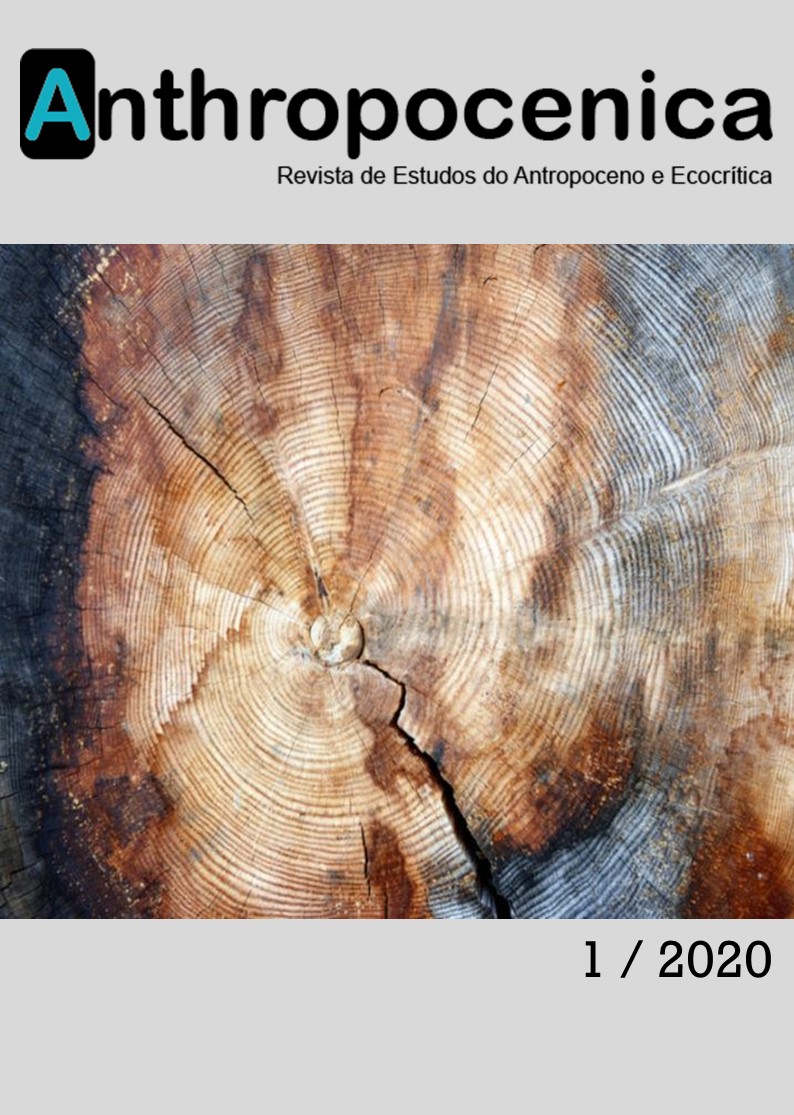A moderna expansão humana e a (re)descoberta do invisível: uma leitura geográfica da pandemia
DOI:
https://doi.org/10.21814/anthropocenica.3090Abstract
The COVID19 pandemic in which the world is immersed presses the need for a deep reflection on the role of human beings in the rupture we experience in the life of our planet. Against the background of the debate on a new geological era characterized by human action - the Anthropocene - and its transforming role on the planet, we incorporate a geographical perspective in the analysis of the elements that enhance the emergence of epidemics / pandemics. Factors such as population growth and urbanization, climate change and its transversal impacts to the planet and society, deforestation and loss of biodiversity, transport and mobility networks are elements considered (co) responsible for the pandemic and multipliers of future crisis situations.
Downloads
References
Barber, C. P., Cochrane, M. A., Souza, C. M., & Laurance, W. F. (2014). Roads, deforestation, and the mitigating effect of protected areas in the Amazon. Biological Conservation, 177: pp. 203-209. DOI: https://doi.org/10.1016/j.biocon.2014.07.004
Bolay, J. (2020). Urban Planning Against Poverty: how to think and do better cities in the global south. Cham, Switzerland: Springer Open. DOI: https://doi.org/10.1007/978-3-030-28419-0
Carvão, S. (2009). Tendências do turismo internacional. Exedra, pp. 17-32. http://www.exedrajournal.com/docs/S-tur/02-Sandra-Carvao-32.pdf
Crawford, D. H. (2007). Deadly Companions - How microbes shaped our history (1st ed.). Oxford: Oxford University Press.
Daszak, P. (2020, July 28). We are entering an era of pandemics – it will end only when we protect the rainforest. The Guardian. https://www.theguardian.com/commentisfree/2020/jul/28/pandemic-era-rainforest-deforestation-exploitation-wildlife-disease
Di Justo, P. (2009, April 28). The Last Great Swine Flu Epidemic. Salon. http://www.salon.com/2009/04/28/1976_swine_flu/
FAO and UNEP. (2020). Forests, biodiversity and people.
Jones, K. E., Patel, N. G., Levy, M. A., Storeygard, A., Balk, D., Gittleman, J. L., & Daszak, P. (2008). Global trends in emerging infectious diseases. Nature, 451(7181), pp. 990-993. DOI: https://doi.org/10.1038/nature06536
Kaufmann, R. K., Seto, K. C., Schneider, A., Liu, Z., Zhou, L., & Wang, W. (2007). Climate response to rapid urban growth: Evidence of a human-induced precipitation deficit. Journal of Climate, 20(10), pp. 2299-2306. DOI: https://doi.org/10.1175/JCLI4109.1
Mendes, R. P. (2015). As Cidades Africanas (1a). Lisboa: Chiado Editora.
Micklin, P. (2007). The Aral Sea Disaster. Annual Review of Earth and Planetary Sciences, 35(1), pp. 47-72. DOI: https://doi.org/10.1146/annurev.earth.35.031306.140120
Oppong, J. R. (2010a). Medical geography of Sub-Saharan Africa. In S.A. Attoh (Ed.), Geography of SubSaharan Africa (pp. 333-365). New York: Prentice Hall.
Oppong, J. R. (2010b). Pandemics and Global Health. New York: Infobase Publishing.
Quammen, D. (2012). Spillover: Animal Infections and the Next Human Pandemic (1st ed.). New York: W. W. Norton.
Revich, B. A., & Podolnaya, M. A. (2011). Global Health Action Thawing of permafrost may disturb historic cattle burial grounds in East Siberia. Global Health Action, 4(1), p. 8482. DOI: https://doi.org/10.3402/gha.v4i0.8482
Sathler, D., Adamo, S. B., & Lima, E. E. C. (2018). Deforestation and local sustainable development in Brazilian Legal Amazonia: An exploratory analysis. Ecology and Society, 23(2): art. 30. DOI: https://doi.org/10.5751/ES-10062-230230
Seto, K. C., Golden, J. S., Alberti, M., & Turner, B. L. (2017). Sustainability in an urbanizing planet. Proceedings of the National Academy of Sciences of the United States of America, 114(34), pp. 8935–8938). DOI: https://doi.org/10.1073/pnas.1606037114
Stannard, D. E. (1993). American Holocaust: The Conquest of the New World. Oxford: Oxford University Press.
Thomas, N., & Nigam, S. (2018). Twentieth-century climate change over Africa: Seasonal hydroclimate trends and sahara desert expansion. Journal of Climate, 31(9), pp. 3349–3370. DOI: https://doi.org/10.1175/JCLI-D-17-0187.1
Tollefson, J. (2020). Why deforestation and extinctions make pandemics more likely. Nature, 584, pp. 175-176. DOI: https://doi.org/10.1038/d41586-020-02341-1
United Nations (2019). Growing at a slower pace, world population is expected to reach 9.7 billion in 2050 and could peak at nearly 11 billion around 2100 | UN DESA | United Nations Department of Economic and Social Affairs. UN. https://www.un.org/development/desa/en/news/population/world-population-prospects-2019.html
World Health Organization. (2020). Coronavirus disease 2019 (COVID-19) Situation Report-94 HIGHLIGHTS. https://www.who.int/docs/default-source/coronaviruse/situation-reports/20200423-sitrep-94-covid-19.pdf
Wuthnow, R. (2010). Be Very Afraid: The Cultural Response to Terror, Pandemics, Environmental Devastation, Nuclear Annihilation, and Other Threats. Oxford: Oxford University Press. DOI: https://doi.org/10.1093/acprof:oso/9780199730872.001.0001




